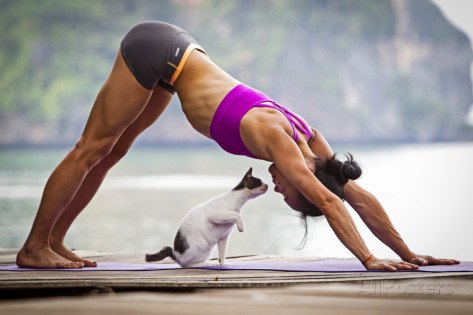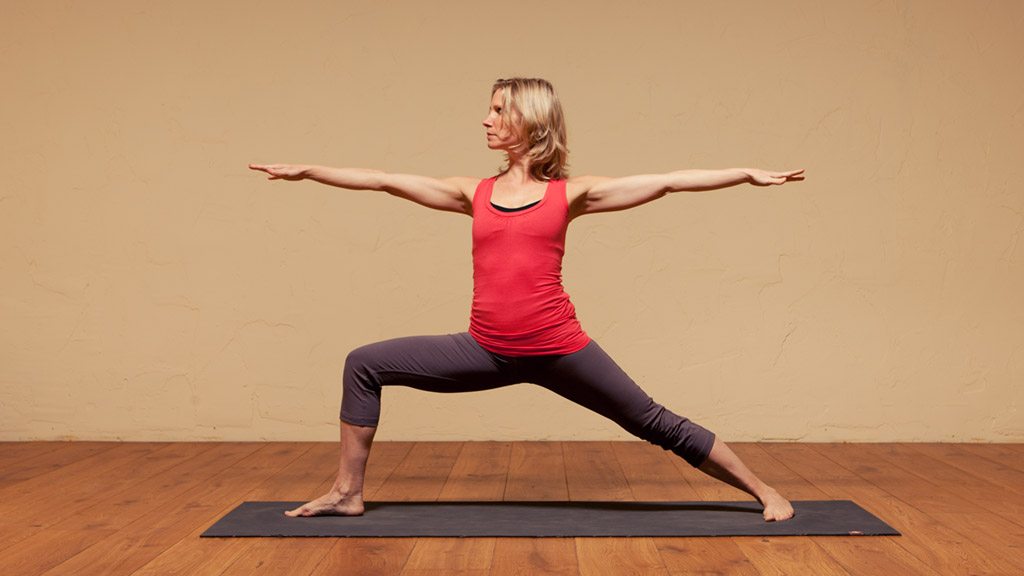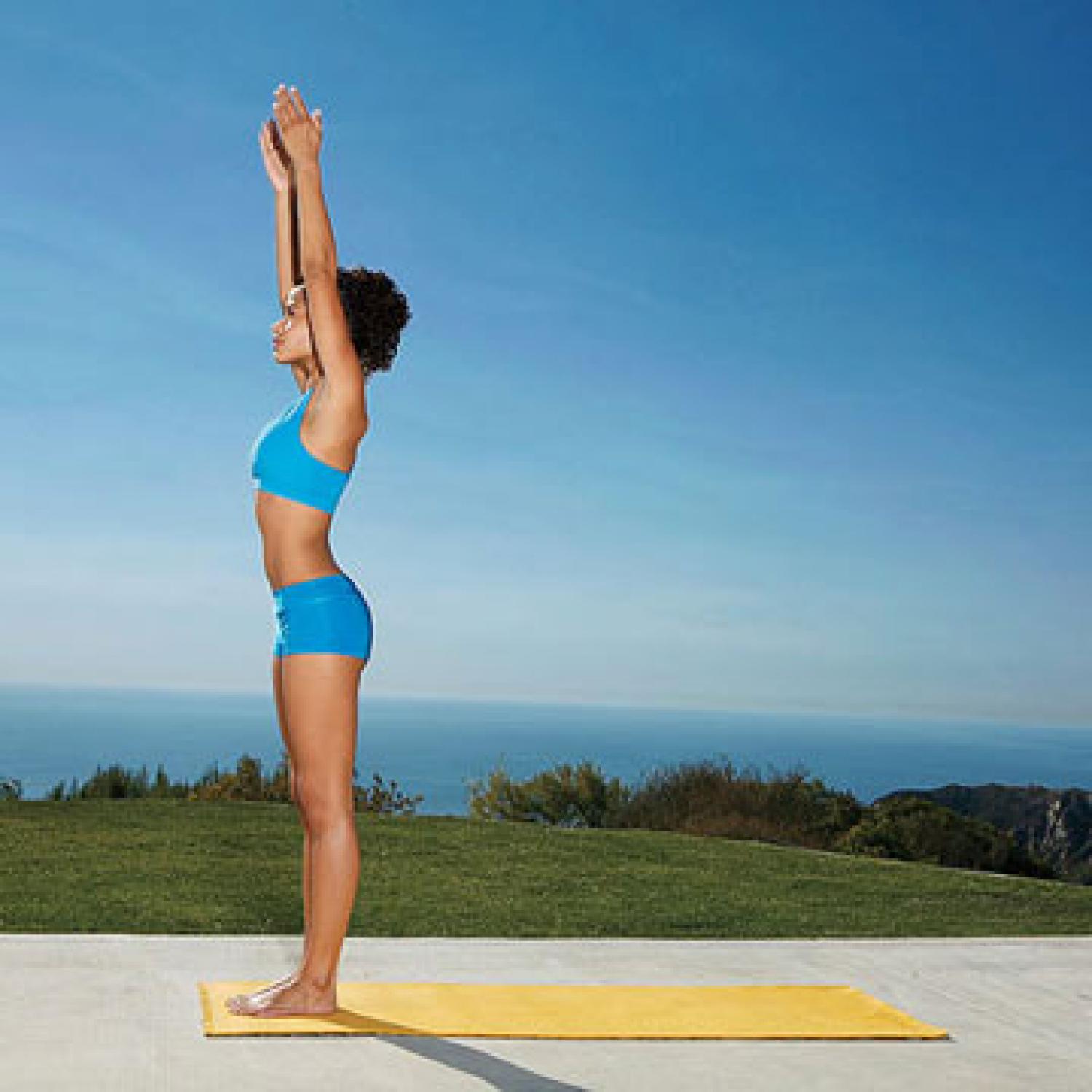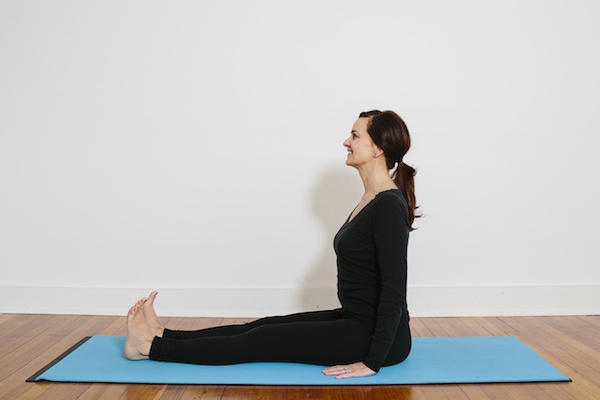Muscle tension begins with messages from the brain to contract certain fibers in your body. Chronic stress, however, leads your brain to contract muscles of your body that are not needed in order to perform particular tasks.[2] In these instances, stretching alone will only provide minimal relief for muscles.
How Stretching Impacts The Muscles
So what happens when you stretch?[3] New scientific revelations show that stretching is much more complex, dynamic, and fascinating than what has previously been imagined. We now understand that increasing our flexibility has much less to do with the physical length, size, and shape of our muscle tissue, and much more to do with the part of our body that controls and moves our muscles: our brain. Stretching regularly allows us to reach our stretch “tolerance” enough times that our brain adapts to this new level of tension and informs our muscles that this new deeper range of motion is acceptable.
5 Yoga Stretches That Improve Your Mental And Physical Range Of Motion
The best way to get your muscles to relax and reap the full benefits of stretching is by learning not to send “tense” messages from your brain to your muscles, except when they are truly needed. Chronic tension sufferers will really struggle with this, especially in the beginning, as your brain has long forgotten how to turn off those chronically tense muscles. Practicing yoga not only produces temporary physical benefits,[4] such as increased flexibility and range of motion, muscle strength, and improved posture, it also improves sleep, lowers cortisol levels in the brain (which is produced by stress),and improves mood and mental focus.
1. Downward Facing Dog[5]
via AllPosters
Start on all fours with your hands directly under shoulders and knees under your hips. Walk your hands a few inches forward and spread your fingers wide, pressing your palms into the mat. Curl toes under and slowly press hips toward the ceiling, bringing your body into an inverted V, pressing shoulders away from your ears. Feet should be hip-width apart and your knees should be slightly bent.
2. Happy Baby Pose[6]
Lie on your back. With an exhale, bend your knees into your belly. Inhale, grip the outsides of your feet with your hands (if you have difficulty holding the feet directly with your hands, hold onto a belt looped over each sole). Open your knees slightly wider than your torso, then bring them up toward your armpits. Position each ankle directly over the knee, so your shins are perpendicular to the floor. Flex through the heels. Gently push your feet up into your hands (or the belts) as you pull your hands down to create a resistance.
3. Warrior Pose[7]
via Ekhart Yoga
Stand with legs 3 to 4 feet apart, turning your right foot out 90 degrees and your left foot in slightly. Bring your hands to your hips and relax your shoulders, then extend your arms out to the sides, palms down. Bend your right knee by 90 degrees, keeping your knee over your ankle. Gaze out over your right hand. Hold this position for 1 minute.
4. Mountain Pose[8]
via Fitness Magazine
Stand tall with your feet together, shoulders relaxed, weight evenly distributed through your soles, and your arms at sides. Take a deep breath and raise your hands overhead, palms facing each other with your arms straight. Reach up toward the sky with your fingertips.
5. Staff Pose[9]
via YogaBird
Sit on the floor with your legs together and extended in front of your torso. Your sacrum and shoulder blades should touch the wall, but not your lower back or the back of your head. Without hardening your belly, firm your thighs, and press them down against the floor. Rotate your thighs slightly toward each other and draw your inner groins in toward the sacrum. Flex your ankles, pressing out through your heels. Take four deep breaths in and exhale
According to yoga experts, the overall purpose of yoga is to create strength, awareness, and harmony in both the mind and body. When the brain and body connection is strong and in sync, chronic pain, muscle tension, and stiffness will vanish.




